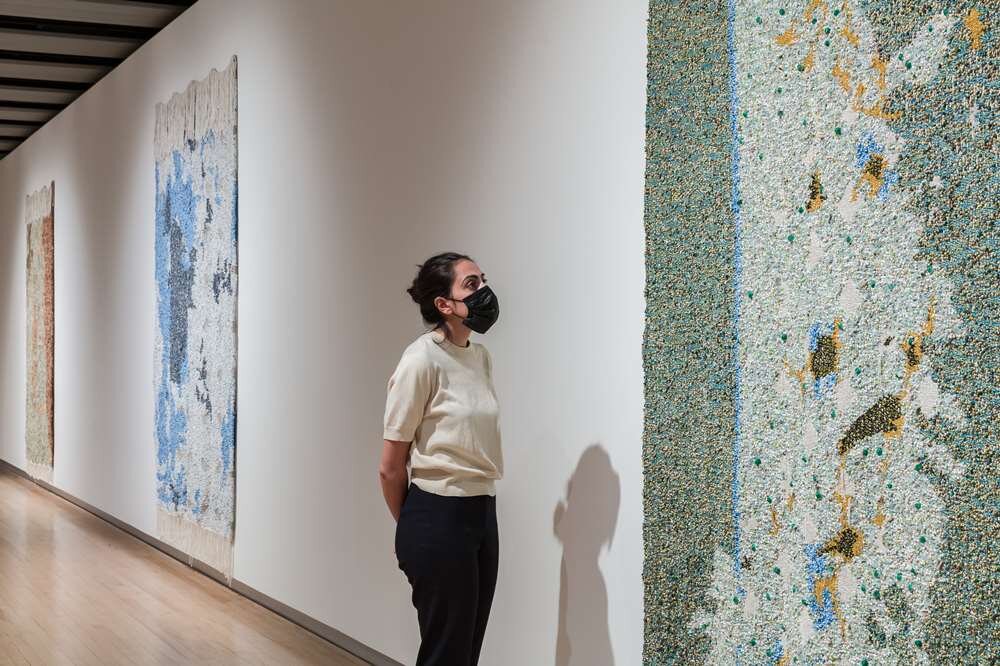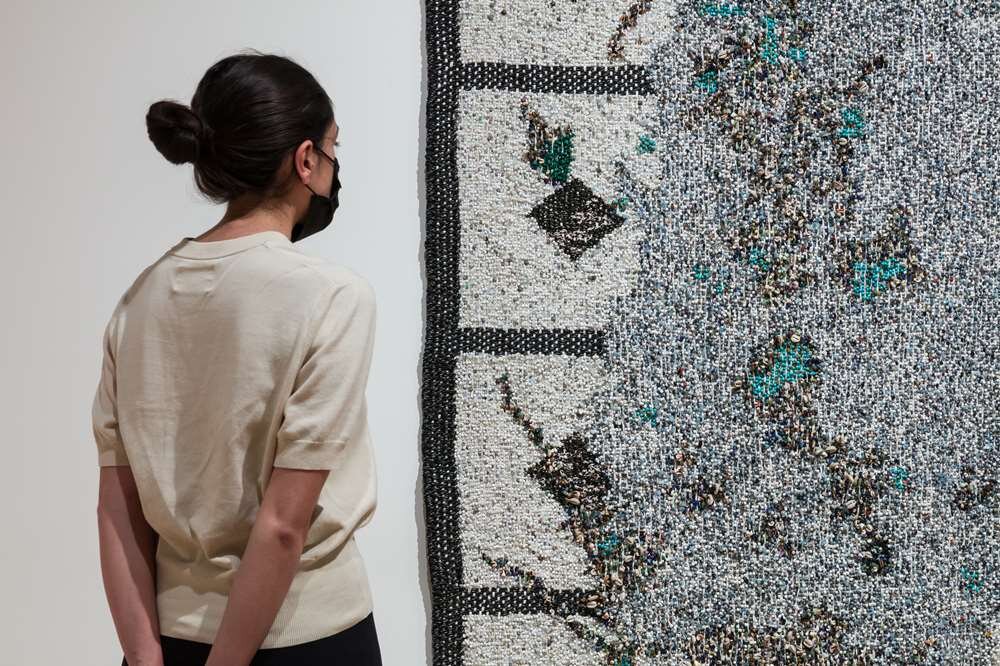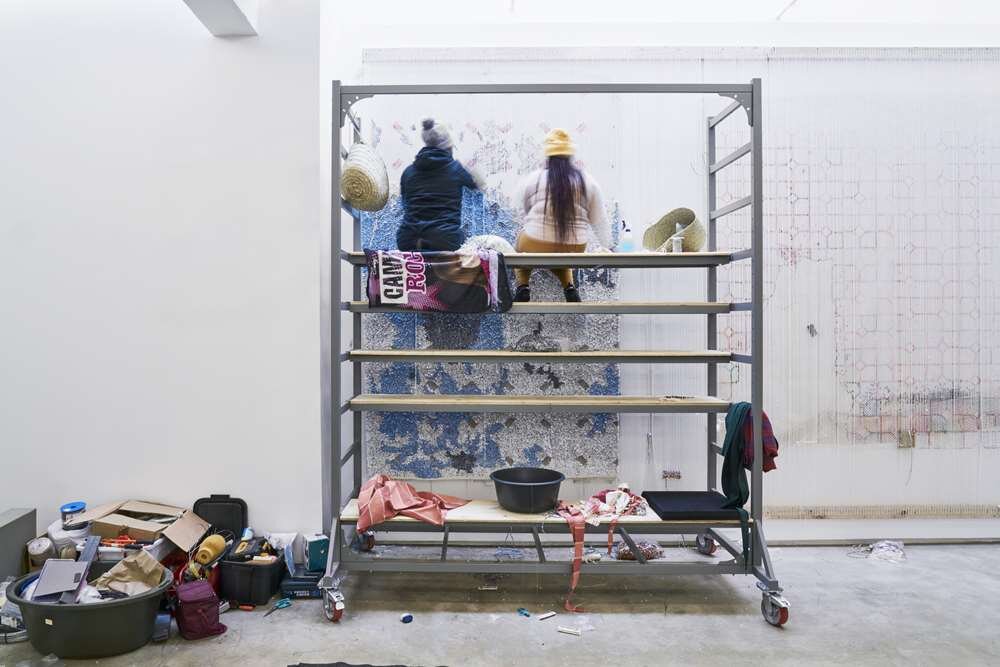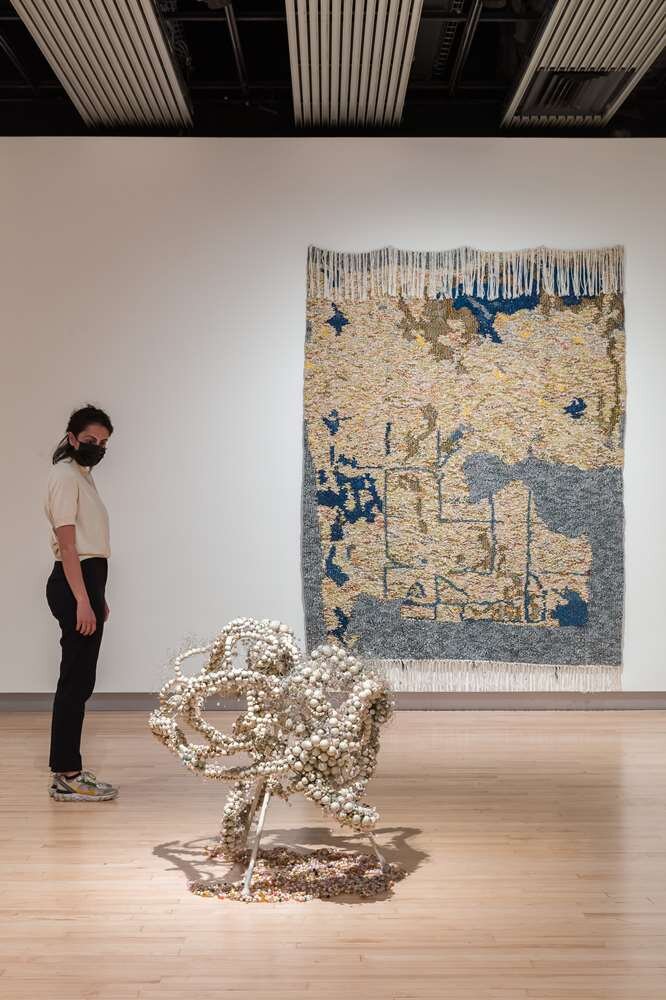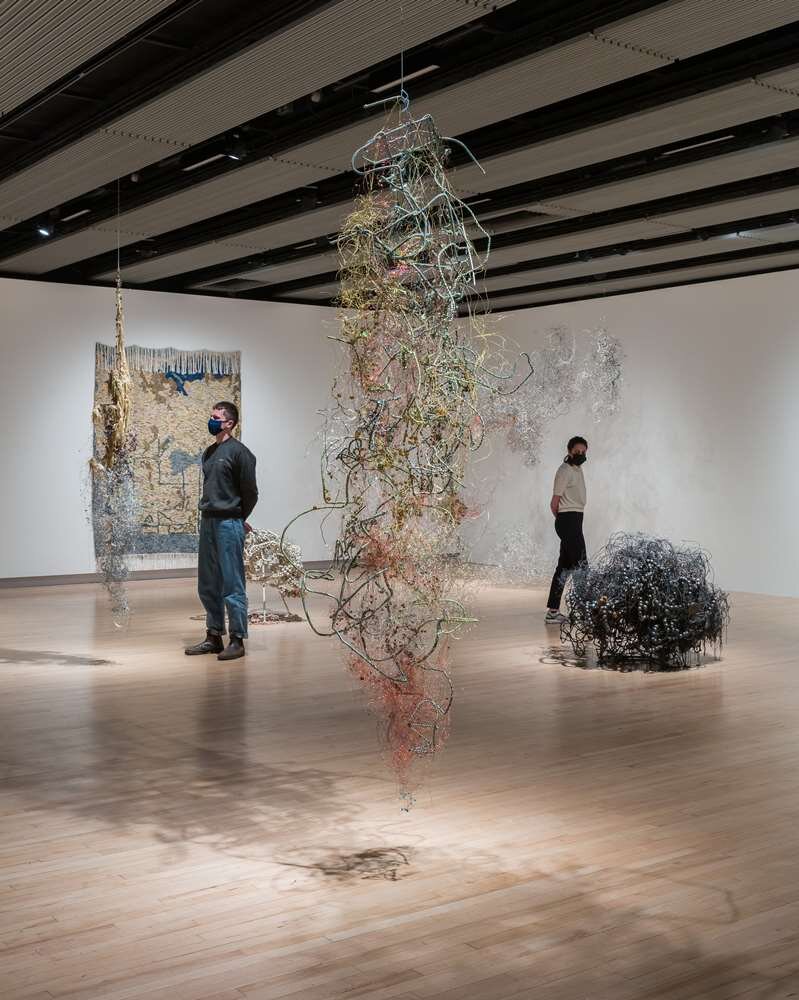The artist speaks to Nataal about his debut solo show at London’s Hayward Gallery
Tapestry is one of art’s most fragile mediums. Delicate, difficult to create and displayed best under very specific environments, it has often faded into the background - both in terms of its prestige in the art world, and in terms of the historical artefacts which trace its heritage. While some accounts locate its origins in Egypt or Greece, others place the earliest weavings in Western China, over 2,000 years ago. But in 2021, tapestry finds a new champion in the form of Igshaan Adams, who presents his first UK solo exhibition Kicking Dust at London’s Hayward Gallery this week.
Adams is from Cape Town - or Bonteheuwel more specifically, an area of the Cape Flats. Historically, Bonteheuwel was known for its strong resistance to Apartheid. According to the Daily Maverick newspaper, The Bonteheuwel Military Wing was formed out of MK cells that existed in Bonteheuwel during the student uprising in the 1980s. At that time the police clashed with learners during protests, raided schools and detained both learners and teachers. Unfortunately, the area continues to be represented in violent terms, in specific relation to its difficult and dangerous relationship to gang violence.
This is perhaps why a painter turned weaver flies right in the face of what is perceived. Amidst this complex history emerges a one-of-a-kind artist, who has infused his weavings with all the grit and uncelebrated glory of his home environment - and has made sure to leave no one behind.
“I have an incredible team that works with me, but I also work with a group of women - teaching them to sew and weave,” Adams says. “And it’s been amazing that the Hayward will be selling their works in the museum shop. It’s really important to me that these women, mostly from difficult communities like my own, have a space to learn and a craft that allows them to improve their lives.”
“It’s really important to me that these women, mostly from difficult communities like my own, have a space to learn and a craft that allows them to improve their lives”
This sentiment is reflected in the exhibition, which is experienced as a large-scale installation encompassing a number of delicate ‘cloud’ sculptures made from spirals of wire and beads, which are suspended in the air between abstract patterned floor weavings and wall hung tapestries that hint at prayer rugs and domestic flooring. These intricate pieces were all made by many hands during his residency at A4 Arts Foundation in Cape Town.
One of the show’s key ‘motifs’ is this concept of ‘desire lines’, which uses art to map out the desirable and undesirable areas of Cape Town - the undesirable often where Coloured communities were relegated. This motif is reminiscent of Portuguese thinker de Sousa’s Santos notion of abyssal, invisible lines that regulate our movement, and further back Fanon’s idea of zones of being and non-being.
For South Africa, where movement continues to be constrained by economic access, this is far from a historical idea, and it is interesting that while Adams has ‘escaped’ these parameters to go to the desirable first world, his continued rootedness in South Africa and his community still makes this a strong part of his practice and politics. The contrast between the old and the new, the past and the now, the traditional and the modern seem to reflect the liminality of his own journey as the one who ‘made it’.
“It’s something I struggle with, this survivor’s guilt. I know that luck isn’t everything, but I also don’t think I’m the most talented person to come out of the Cape Flats. One day, you know, I’m in Bonteheuwel where people are fighting over the last bit of a cigarette, and in another moment I’m in a five-star hotel in London. That realness and that contrast is still surreal for me,” he explains.
Indeed, the exhibition at the Hayward is the culmination of a cracking career and the support of Adams’ community. When we talk about his formal and informal teams, family dominates the conversation. Adams reflects fondly on his mother’s pivotal role in his early practice, and the fact that even this exhibition features the handiwork of siblings, cousins and other Bonteheuwel residents, all unsung artisans in their own right. Whether it’s stringing beads to add sparkle to his more embellished rope, twine and chain weavings, collecting floor tiles, or helping to polish up the final project, Adams’ vision is always executed as part of a collective, whose life (and livelihood) is tied to his own.
“It’s certainly overlooked that it’s not just me. It’s always we and us. And sure, I am the director, and ultimately the idea comes from my imagination. But I can’t exclude the input of people like Phumeza, who I’ve worked with the longest. She’s a strong personality and she is the one I go to for a bold tapestry. And then there’s also her sister Zandi, who is gentle and nurturing and she’s the person I want to work with if I’m trying to achieve a more subtle expression in the work. And then my family has always been my primary workforce and support system, even before anybody could afford to get paid.”
And it’s a collective that works. Over the course of his career, Adams has presented works in exhibitions in Oslo, Marrakech, Paris, Amsterdam and elsewhere. In addition to his global footprint, he was also the 2018 recipient of the coveted Standard Bank Young Artist Award, which in addition to its prestige, saw Adams tour an exhibition around South Africa, to a range of artistic and ‘everyday’ audiences. While these experiences have been formative in developing Adams’ craft, he recognises Kicking Dust as a turning point - especially because the exhibition was developed during the pandemic.
“Covid-19 has been such a lesson for everyone, but in a strange way it helped me focus and gain some confidence, even amidst so much uncertainty,” he reflects. “I’m having a lot of fun with the material and the kind of working that I’m making for Hayward. The sculptural elements and the installation. I have dreams of seeing how far this can go.”
Igshaan Adams’ Kicking Dust is on view at Hayward Gallery, London, until 25 July 2021


